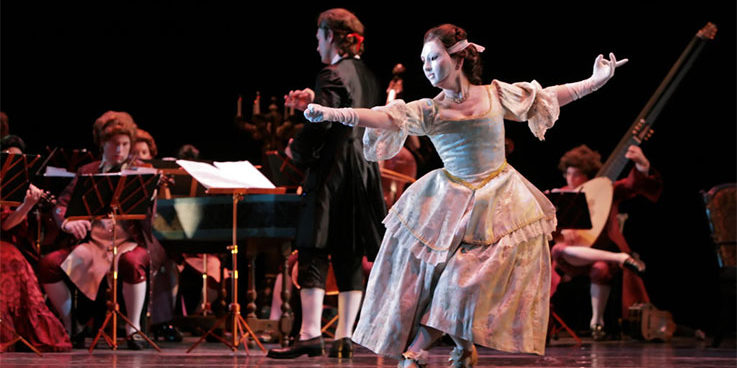At first, I thought it was my new prescription for one contact lens to focus on distance and one to focus on seeing the computer screen. But my balance was changing.
I did not notice this while doing everyday activities, but I did notice a new wobble while trying to balance on the ball of my foot when standing on one leg. Dancers require excellent balance for every aspect of their art. When my pirouettes became less confident, I began to seek out a solution beyond my contact lens experiment.
Advice from Senior Dancers
Many of my dancer friends who are over 60 explained that losing balance is a common outcome of aging. I realized that my single contact lens probably had nothing to do with this occasional shaky balance. But how could I improve my balance?
Exploring Hormones
In my research, I found an article published online in January of 2019: Effect of Estrogen on Musculoskeletal Performance and Injury Risk by Nkechinyere Chidi-Ogbolu, Keith Baar. This well-documented article is fairly technical, however, it offers an extremely articulate perspective on the aging female body. You might want to jump to the sections on pre-menopausal and post-menopausal life stages. Here’s an extract:
“Estrogen has a dramatic effect on musculoskeletal function. Beyond the known relationship between estrogen and bone, it directly affects the structure and function of other musculoskeletal tissues such as muscle, tendon, and ligament. In these other musculoskeletal tissues, estrogen improves muscle mass and strength and increases the collagen content of connective tissues. However, unlike bone and muscle where estrogen improves function, in tendons and ligaments, estrogen decreases stiffness, and this directly affects performance and injury rates. High estrogen levels can decrease power and performance and make women more prone to catastrophic ligament injury. The goal of the current work is to review the research that forms the basis of our understanding of how estrogen affects muscle, tendon, and ligament and how hormonal manipulation can be used to optimize performance and promote female participation in an active lifestyle at any age.”
There are many other articles and studies cited here by Baar and Chidi-Ogbolu. I recommend reading this article first, then follow the links to other references and additional studies.
What Can You Do Today?
The article I referenced above recommends both exercise and hormone replacement therapy (HRT). Not every woman will want to pursue HRT. It’s a subject for individual investigation and your doctor. There are many forms of exercise to improve balance, have fun, and stay fit. But why not dance?
The Dance Connection
Dance can connect you to both your physical and spiritual nature. Historically balletic exercises were developed within the rules of proportion and geometry. Although this theory is not always taught in beginning dance classes today, the practical application of this theory is maintaining your balance. Dancers are trained to develop their balance and that skill is reflected in the overall aesthetic of all dance styles.
Finding Balance at Any Age: Historical Dance
I was trained in ballet and specialized in historical dance. The range of motion in historical dance is smaller than contemporary dance, which tends to be more athletic. Renaissance and Baroque dance are rooted in court dances. For these genres more theatrical dances, the movement range expanded for dramatic purposes. These can be performed at a low, medium, or high range of movement.
A Dance Move to Improve Balance
A simple pavane is a stylized way of walking in dance that embraces the cadence and phrasing of the accompanying music. An upright posture reflects a connection between heaven and earth. The movement sits in an artful context of music as it recalls images of paintings and sculptures. Dancing the pavane can improve balance while experiencing the cultural richness of the past.
Try it Out: Where to Find a Class
The New York Baroque Dance Company offers Dance of the Month which can keep you engaged year-round. It is geared toward people with beginning to intermediate dance training.
For those who are curious but have never taken a dance class or are novices, a fellow company member, Caroline Copeland, offers a free weekly zoom class on Fridays:
You too can find a better balance by adding a dance practice to your schedule.
Catherine Turocy.
Art. Body Health. Lifestyle. Menopause.
If you enjoyed this article and would like to help us support this beautiful project so we can continue creating amazing content; please help us by donating as little as the cost of a coffee or as much as you like.
and






